- Home
- Antonia Fraser
The Gunpowder Plot Page 2
The Gunpowder Plot Read online
Page 2
Throughout, I have had great support from my publishers on both sides of the Atlantic: Nan Talese in the US, who, from the first, shared my vision of how the book might be; and Anthony Cheetham, Ion Trewin and Rebecca Wilson in England. Linda Peskin typed and retyped the MS with exemplary skill, matched only by her patience. My agent Michael Shaw counselled calm at the appropriate moments; Douglas Matthews, Indexer Extraordinary, not only performed his task with his accustomed dexterity but also supplied information about Guy Fawkes ‘celebrations’ in Lewes; Robert Gottlieb and Rana Kabbani offered editorial suggestions, as did my mother, Elizabeth Longford. Further family assistance included advice on the modern Prevention of Terrorism Act from my son-in-law Edward Fitzgerald Q.C. and my son Orlando Fraser. Lastly my husband Harold Pinter read a story which is, in part, about persecution, with his characteristic generous sympathy for the oppressed.
Antonia Fraser
St Nicholas Day, 1994 – Feast of the English Martyrs, 1995
PROLOGUE
Bountiful Beginnings
These bountiful beginnings raise all men’s spirits, and put them in great hopes, insomuch that not only Protestants, but Papists and Puritans, and the very Poets… promise themselves great part in his [James I] favour.
JOHN CHAMBERLAIN
to Dudley Carleton, 12 April 1603
On 21 March 1603 Father William Weston, a Catholic I priest imprisoned in the Tower of London, was aware that ‘a strange silence’ had descended on the whole city. ‘Not a bell rang out. Not a bugle sounded,’ although ordinarily both bells and bugles were often heard, even in the tiny cell in which he had been held without fresh air or exercise for over five years.
The explanation for this silence was awesome. In Richmond Palace, the old Queen who had ruled England for over forty years ‘lay dying beyond all hope of recovery’. Like so many of the beleaguered Catholics in England, men and women, the laity as well as the priesthood, nobles and serving people, Father Weston wondered whether a new reign might not bring relief.1
Elizabeth Tudor, daughter of Henry VIII and his ill-fated second wife Anne Boleyn, was in her seventieth year, a distinguished age for the time in which she lived. She had reigned alone, without consort or child, since the death of her half-sister Mary Tudor in 1558 – so long that a man would have to have been in his fifties to have any proper recollection of the age before Elizabeth.
She had outlived not only the Catholic Queen Mary Tudor, but Mary’s erstwhile husband, England’s arch-enemy Philip II of Spain, who had died in 1598. The pale Valois Kings of France of her youth (including Mary Queen of Scots’ first husband, who had died young) had departed like shadows, leaving no heirs. The vigorous Henri IV of Navarre, married to Marguerite de Valois and now sitting on the throne of France, was twenty years her junior. Queen Elizabeth had in fact reigned longer than any previous adult successor to the throne.* On the one hand, common sense surely made her approaching death predictable; on the other, it was for most people unimaginable.
This element of disbelief owed something to the fact that it had long been forbidden, as in some twentieth-century dictatorship, to discuss the identity of the next ruler. For so doing in the House of Commons in 1593, the Puritan Peter Wentworth had been imprisoned in the Tower of London till his death. Ten years later, Elizabeth had still not indicated her successor (as we shall see, there were problems with a purely hereditary succession). Psychologically, this public void made the prospect of her demise seem unlikely, as though the Queen could not possibly let go of life until she had made proper arrangements for who was to follow her. It was a point of view the Queen herself had perfectly well understood in years gone by, when she had observed drily that she would not allow discussions of the succession, since men were always wont to worship the rising rather than the setting sun.
The Queen’s surprisingly robust health had also encouraged foolish fantasies of her immortality in recent years. She might show a certain weariness on state occasions – at the Opening of Parliament in 1601 for example – or after riding her horse in the park. Critical eyes might note that the haggard, parchment-white face of the Queen in her late sixties was now plumped out with ‘fine cloths’ in her cheeks. Yet as late as March 1602 she was described as ‘still, thanks to God, frolicky and merry’, for all the signs of decay in her face. She continued to impress strangers by her sheer glittering presence. Her air of majesty elicited the cry of ‘oh che grandezza!’ from the lips of an emissary from the Spanish Netherlands. Only three months previously the Queen had danced a coranto at court, a complicated measure which demanded a good deal of energy.2
Melancholy seemed to be her chief enemy, that and the famous indecision which she had used so brilliantly in the past to manage (as well as madden) her male advisers, but which was now on occasion quite paralysing.3 Much of this ‘settled and unremovable’ melancholy sprang from that unchanging tragedy of old age, the deaths of old friends. William Cecil, Lord Burghley, her faithful political servant, had died in 1598, leaving his brilliant, tireless son Robert to take his place. But the recent death of a close woman friend, the Countess of Nottingham (who as the daughter of Mary Boleyn was also the Queen’s first cousin), was thought by many who knew Elizabeth well to have precipitated her decline.
The onset of what would be the Queen’s last illness came at the beginning of March. The first allusion to it by her chief minister Robert Cecil was made nine days later in a highly secret letter to George Nicolson, his agent in Scotland. He wrote that his mistress had recently been ‘much deprived of sleep’, which was, as usual, making her impatient. Cecil went on to explore, in language that was cautious but unmistakable, the sombre possibility that she would not recover. ‘Because all flesh is subject to mortality’, as he delicately phrased it, Cecil had to confess that the Queen had been ‘so ill-disposed’ that he was fearful of her ‘future weakness’, leading to danger of that event ‘I hope mine eyes shall never see’.4
In fact the insomnia did not improve and the weakness increased. In an age before newspapers, popular rumour had an especial role to play: a few years earlier, Shakespeare had personified Rumour as a character who wore a garment ‘painted full of tongues’.5 As stories of what was happening began to spread, the bells became silenced and the bugles stilled until even the prisoners in the Tower of London were aware of the crisis. The Councillors of State were by now gathered at Richmond Palace in Surrey; it was understood that they would remain until that event so much dreaded by Cecil had actually taken place.
The old Queen’s spirits further lapsed into an extraordinary depression which nothing seemed able to shake. For a while she refused to go to bed, lying upon cushions without eating as though nature could somehow be defeated by a strong will. Robert Carey, the grandson of Mary Boleyn and, like the Countess of Nottingham, a privileged courtier, visited her from the north of England, where he had been the Warden of the Middle March for the last five years. He was received by a Queen ‘sitting low upon her cushions’. When he told her that he was delighted to see her well, the Queen took his hand and ‘wrung it hard’.
‘No, Robin, I am not well,’ she said, and talked to him about her ‘sad and heavy’ heart, with more than forty or fifty ‘heavy sighs’. Carey had only once known the Queen like this, and that was after the beheading of Mary Queen of Scots. It was an ominous precedent. Finally Lord Nottingham, widower of the Queen’s old friend the Countess, managed to get her to bed: ‘what by fair means, what by force’.6 It was time for men to turn their eyes towards the rising sun.
To Robert Cecil and his fellow members of the Council surrounding the dying Queen, that sun was now represented by a man whose great-grandmother had been a Tudor princess: King James of Scotland (although this decision had been made comparatively recently). The agent Nicolson in Edinburgh had used his discretion to keep King James informed of the progress of Queen Elizabeth’s illness. On 19 March, for example, the King had decided to postpone a visit to the remote Scottish Highlands, and mer
ely journeyed as far as Stirling to see his elder son Prince Henry. The visit had some dynastic significance for very soon the handsome nine-year-old boy might find himself next in line to the English as well as the Scottish throne.
An extraordinary amount of traffic now sprang up between the English and the Scottish courts as the successful Elizabethan courtiers sought to devise methods of becoming successful Jacobean ones. The most practical measure was that taken by Robert Carey. Sending word to Edinburgh to expect him without delay once the Queen was dead, he arranged to have fast horses posted all along the high road to Scotland. Carey intended to be the one who would break the news of his accession to the Scottish King. After all, he reasoned to himself, God helped those who helped themselves. Given that James had hitherto never shown him any particular favour, such a precaution was neither ‘unjust nor dishonest’.7
By Wednesday morning, 23 March, the Queen was speechless and could communicate with her Council only by signs; later still a movement of the eyes had to suffice. When night came Elizabeth was in a coma, slipping away quietly towards that other realm, where, as the Archbishop of Canterbury frankly told her, ‘for all that she had long been a great queen here upon earth… shortly she was to yield an account of her stewardship to the King of Kings’. At some point, when the Queen was still capable of making a sign, she was said to have indicated that James of Scotland should be her successor by putting her hand up to her head at the mention of his name.8 The story, spread afterwards, was a convenient one to overcome the inconvenient fact that, for as long as Elizabeth had indeed been a ‘great queen here upon earth’ as described by the Archbishop, she had maintained her obstinate silence on the subject of the succession. Under the circumstances the Council was taking no chances.
There was a charged atmosphere inside the palace, and the porters were given a special command that no one was to leave, so that Rumour in his garment ‘painted with tongues’ should not escape. Outside, extraordinary precautions were being taken to ensure a smooth succession. For example the Council ordered that the wayward Lady Arbella Stuart, Elizabeth’s cousin, one possible contender for the throne, should be brought south from Hardwick in Derbyshire. There, far from London, Papists might have kidnapped her and used her as a focus for some kind of coup since she was believed to have Catholic sympathies. Elsewhere ‘the principal Papists’ were detained as the Queen’s sickness worsened. Cecil’s elder brother, Lord Burghley, in his administrative role of Lord President of the North, had a vital part to play in holding the peace in that troubled area between England and Scotland; he wrote that he was ‘ready to defend the right’.9
The end for Queen Elizabeth came in the early hours of the morning on 24 March. At the last, only her women were with her. The members of the Council withdrew from Richmond to Whitehall to draft the vital document which would publicly proclaim James King of England later that morning. Long before this time, however, the enterprising Robert Carey was flying north on the first of his swift horses. His elder brother, George Carey Lord Hunsdon, who as Lord Chamberlain was a ‘great officer’ of the court, protected Carey from the indignant Richmond porter with the reassuring words: ‘Let him pass, I will answer for him.’ (Self-interest rather than family loyalty was at work, for all the Careys expected to benefit from Robert’s derring-do.) There was some move from the Council to stop Carey but a friendly warning from another functionary, the Knight Marshal, enabled him to get clear of London shortly after nine o’clock.
Carey headed first for Doncaster, and by Friday night was at his own house at Widdrington in Northumberland. He was now ninety-seven miles from Edinburgh and would have been there for supper by starting ‘very early’ on the Saturday had he not suffered ‘a great fall by the way’ in the course of which his horse kicked him. So, weak with loss of blood, Robert Carey finally staggered into the royal palace at Holyrood and saluted James Stuart by his new four-fold title: King of England, Ireland, Scotland – and France (the mediaeval Plantagenet claim had never been formally discarded).
As proof of the old Queen’s death, Carey told the King that he brought him ‘a blue ring from a fair lady’. He then handed over a sapphire ring which James had sent south with specific orders that it be returned to him the moment Elizabeth was actually dead.*
‘It is enough,’ said the King. ‘I know by this that you are a true messenger.’ Far into the night, the sovereign of England sat up asking Carey questions about his new kingdom (having first considerately sent for a surgeon to tend Carey’s wounds).10
The first proclamation of the new sovereign was made in London at 10.00am on 24 March – some seven or eight hours after the Queen’s death. The drafting session in Whitehall, which took place, fittingly enough, as the sun was rising, was made unexpectedly easy by the fact that Robert Cecil produced a text. In his prudent way, he had no doubt been carrying it about with him throughout the last anxious weeks.* This proclamation, which referred firmly to ‘the undoubted right’ of James to succeed, was read first at Whitehall Gate at ten o’clock, then by the High Cross in Cheapside an hour later, where it was noted that Cecil spoke ‘most distinctly and audibly’. Finally it was read at the Tower of London, where the prisoners of state, including the priests, rejoiced along with the others. Father Weston was able to watch from his window, listening to the ‘crying out’ and noting the pomp with which the ceremony was performed. He realised that the Council had calculated every detail ‘with precision and thoroughness’.11
By nightfall, bonfires were burning brightly throughout the capital. Although the French Ambassador was shocked by the ungrateful behaviour of the Londoners in lighting fires to celebrate their sovereign’s death, there is no doubt that these were flames of rejoicing, not lamentation. As John Isham, a law student from Northamptonshire, wrote to his father: the people were saluting ‘a prince of great hope’. And throughout the country, not only in London, the sound of trumpets and other music was heard in the market-place. Spectators rent the air with shouts, their cries chiming with the bells, and an enormous amount of liquor was consumed around each bonfire. In the north, at York and Kingston-upon-Hull, in the east at Norwich, in the west at Bristol, where the sheriffs in their scarlet had the new King’s picture placed high over their heads, and in the south at Winchester, King James was proclaimed as ‘being royally and in the right line from both Houses of York and Lancaster’.12
It was significant that the man who investigated the proclamation at Winchester, hastening there in advance of the Council’s official notification with a speed worthy of Robert Carey, was a Catholic, Sir Robert Tichborne. Far from causing trouble as had been anticipated, the leading ‘Papists’ hastened to demonstrate their enthusiasm publicly, seeing in this moment an excellent opportunity to start the reign as they meant to go on, as loyal subjects of the new King, for all their dissident religious views. Even the Jesuit priests, whose mere presence in England was illegal and punishable by death, wanted to display their patriotism. Father Henry Garnet, Superior of the Jesuits in England, sent a letter to a prominent courtier, hoping that it would be shown to James, in which he expressed the Jesuits’ wish to be ‘dear and not unnatural subjects of the crown’.13
Catholics were ostentatiously among those who provided barrels of wine for public places and threw down money to the crowds from their windows. And no action was more presage-ful than that of the Catholic magnate Sir Thomas Tresham, who proclaimed King James at Northampton a mere day after the Queen’s death. Born at the end of the reign of Henry VIII, long regarded as a leader in the Catholic community, which depended on him for ‘advice, direction’, Tresham had spent over twenty years of his life in prison for his refusal to conform to the Protestant religion, as well as suffering enormous fines.14
Married to a member of another distinguished Catholic family, a Throckmorton, Sir Thomas had a vast brood of children. One of these, Francis Tresham, his heir, was a scallywag who had been mixed up in the anti-government Essex conspiracy of 1601. The charismatic Robe
rt Catesby, Francis’ first cousin on his mother’s side, had also been involved. Francis Tresham had cost his father dear to buy him out of trouble, and Sir Thomas had helped too with Catesby’s fine. The rest of Sir Thomas’ children were more satisfactory and had made a variety of matches among the Catholic-oriented nobility and gentry. When he stood at the cross at Northampton to proclaim King James, barracked by the local Puritans, but not by the local Protestants, his family’s rebellious tendencies curbed, Sir Thomas had reason to hope that he would enjoy a serene old age.
Some of that general English mood of rejoicing which had shocked the French Ambassador was due to the fact that the crown had passed to an adult male. James I, now aged thirty-six, had reigned since babyhood when his mother Mary Queen of Scots had been obliged to abdicate, and he had ruled since his majority. Such an experienced – masculine – hand at the helm had not been known since the death of Henry VIII over half a century previously. There was no doubt that for all the brilliant myth of Gloriana, for all the genius which Elizabeth had displayed at propaganda to turn her innate weakness of sex into a strength, a male ruler was regarded as the natural order of things.
Furthermore, that brilliant myth had itself begun to fade in the last years of Elizabeth’s reign. And now that she was no longer alive to dazzle her subjects with splendour, it became easier to realise that the Queen had ended her life as an extremely querulous old woman. Popular ballads on her death tended to draw attention to her sex:

 Warrior Queens
Warrior Queens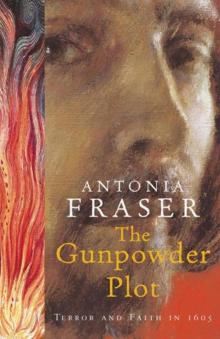 The Gunpowder Plot
The Gunpowder Plot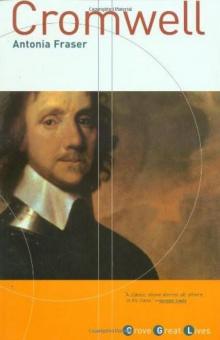 Cromwell
Cromwell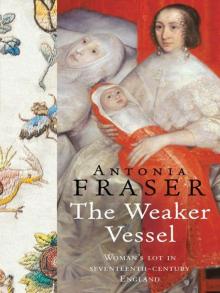 The Weaker Vessel: Women's Lot in Seventeenth-Century England
The Weaker Vessel: Women's Lot in Seventeenth-Century England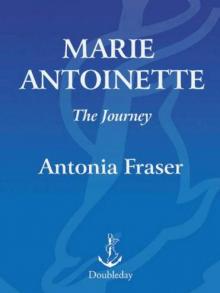 Marie Antoinette: The Journey
Marie Antoinette: The Journey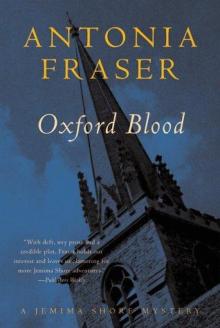 Oxford Blood
Oxford Blood Your Royal Hostage
Your Royal Hostage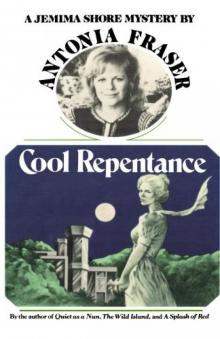 Cool Repentance
Cool Repentance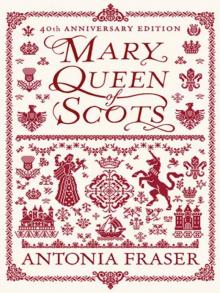 Mary Queen of Scots
Mary Queen of Scots Political Death
Political Death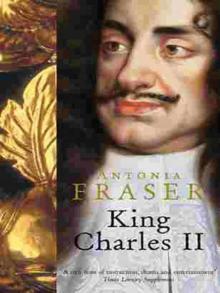 Royal Charles: Charles II and the Restoration
Royal Charles: Charles II and the Restoration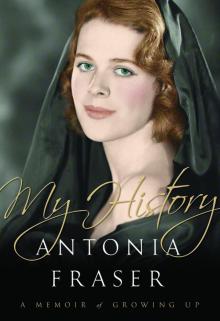 My History: A Memoir of Growing Up
My History: A Memoir of Growing Up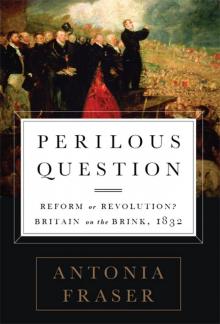 Perilous Question: Reform or Revolution? Britain on the Brink, 1832
Perilous Question: Reform or Revolution? Britain on the Brink, 1832 Jemima Shore at the Sunny Grave
Jemima Shore at the Sunny Grave A Splash of Red
A Splash of Red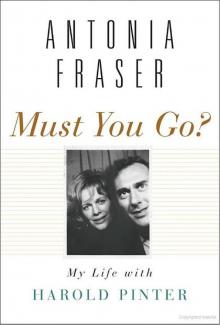 Must You Go?: My Life With Harold Pinter
Must You Go?: My Life With Harold Pinter Love and Louis XIV: The Women in the Life of the Sun King
Love and Louis XIV: The Women in the Life of the Sun King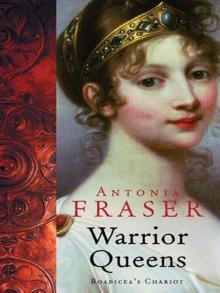 The Warrior Queens
The Warrior Queens The Wild Island
The Wild Island Quiet as a Nun
Quiet as a Nun Perilous Question
Perilous Question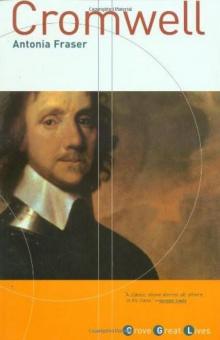 Cromwell, the Lord Protector
Cromwell, the Lord Protector Gunpowder Plots
Gunpowder Plots The Wild Island - Jemima Shore 02
The Wild Island - Jemima Shore 02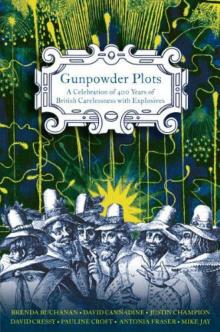 Gunpowder Plots: A Celebration of 400 Years of Bonfire Night
Gunpowder Plots: A Celebration of 400 Years of Bonfire Night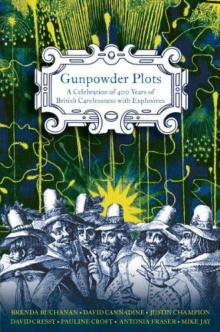 Gunpowder Plots_A Celebration of 400 Years of Bonfire Night
Gunpowder Plots_A Celebration of 400 Years of Bonfire Night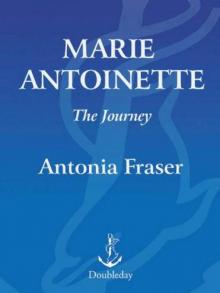 Marie Antoinette
Marie Antoinette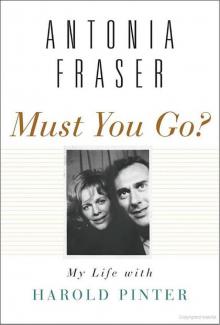 Must You Go?
Must You Go?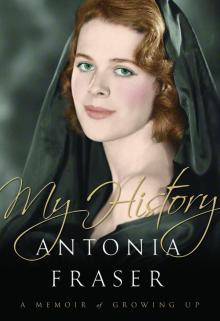 My History
My History